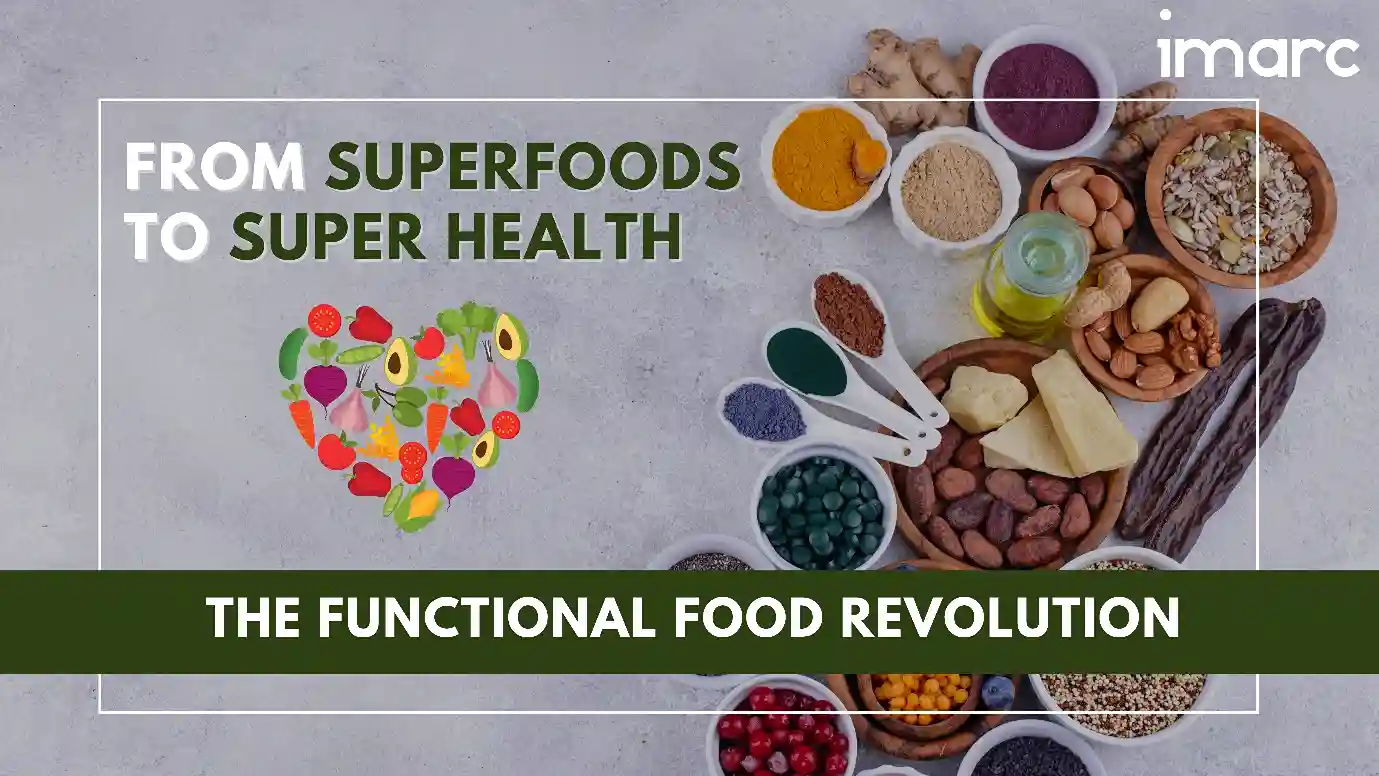From Superfoods to Super Health: The Functional Food Revolution

Functional foods promote overall well-being and offer specific health benefits beyond daily nutrient intake. These benefits encompass enhanced bone health, effective cholesterol management, improved heart health, and eye health. Functional foods include probiotic yoghurt, omega-3 enriched eggs, fortified milk, antioxidant-rich berries, and functional beverages.
Functional food has diverse applications, including weight management, sports nutrition, digestive health, immunity, cardiovascular health, and clinical nutrition. The ingredients in functional foods include probiotics, minerals, proteins and amino acids, dietary fiber, and vitamins. Functional food products come in various types, such as snack/functional bars, dairy products, baby food, bakery items, and breakfast cereals. These foods are easily accessible in supermarkets, hypermarkets, specialist retailers, convenience stores, and online stores.
Navigating the Booming Functional Food Market: Trends and Insights
According to a study by IMARC, the global functional food market is projected to reach US$ 305.6 Billion by 2028. The demand for functional foods has grown substantially due to the rising popularity and consumer demand for such products over time. Several factors that contribute to this market growth are outlined below:
Increasing Health Consciousness: Consumers are becoming more health-conscious and seeking foods offering additional health benefits beyond basic nutrition. Functional foods solve various health concerns like heart health, digestion, immunity, and weight management. As a result, the demand for functional food is rising in the market.

Rising Chronic Diseases: The increasing prevalence of chronic diseases, such as obesity, diabetes, cardiovascular diseases, and digestive disorders, has increased the demand for dietary solutions to help prevent or manage these conditions. Functional food has gained attention because it contains bioactive compounds and nutrients that can contribute to disease prevention and management.

Advancements in Food Technology: Technological advancements in food production, such as microencapsulation, nanotechnology, biotechnology, genetic modification, and biofortification, play a significant role in driving the demand for functional foods. Furthermore, the development of alternative protein sources like plant-based proteins and lab-grown meats can be incorporated into functional foods to provide essential amino acids and support muscle health.

Supportive Government Policies: Governments of various nations are implementing various policies, such as clear and well-defined regulations for labelling, health claims, safety standards, and health and nutrition education. Incentives for research and development (R&D), promotion of functional foods in public institutions, and other favorable measures support functional food development, production, marketing, and consumption. Additionally, tax incentives and subsidies for manufacturers contribute to lower production costs and promote market competitiveness, thereby driving the market growth.

Easy Availability and Accessibility: Functional foods are readily available in supermarkets, hypermarkets, specialist retailers, convenience stores, online stores, and other channels. Furthermore, the growth of e-commerce and direct-to-consumer channels enables functional food companies to reach a wider audience.

Moreover, the COVID-19 pandemic has shifted consumer behavior toward health and well-being, thereby facilitating the demand for functional foods fortified with vitamins, minerals, antioxidants, and probiotics that support the immune system and offer specific health benefits. The pandemic has also led to increased investment in research and development (R&D) in the health and wellness sector, including exploring functional ingredients and their potential role in immune support and overall well-being.
Exploring the Cutting-Edge: Trending Headlines in the Functional Food Frontier
- Hearthside Food Solutions has acquired Standard Functional Foods Group. This acquisition of SFFG will further enhance Hearthside’s entry into the functional bar category, enabling the company to meet the growing demand for a widening array of bars in the US. The addition of SFFG will bring the Hearthside network to 24 production facilities.
- Glanbia Nutritional, a subsidiary of Glanbia Plc focusing on nutrition, has acquired Sterling Technology, a South Dakota-based manufacturer of dairy bioactive solutions derived from bovine colostrum. This acquisition gives Glanbia a significant presence in the bovine colostrum market and expands its footprint within the immunity and gut health sectors.
- Nestlé has launched a functional food for adults, consisting of unique ingredients supporting the three pillars of mobility: bone health, muscle strength, and joint functionality. The powdered beverage under the YIYANG Active brand has been clinically proven to enhance mobility during ageing, marking the first Nestlé product with functional food approval in China.
- Cargill has entered a joint development agreement (JDA) with Renmatix to utilize the company’s technology for converting unused plant materials into functional food ingredients.
- Danone North has introduced new products, including Silk Mocha Almond Creamer and So Delicious Dairy Free French Vanilla Coconut Milk Creamer. Additionally, the company has launched the new Dairy & Plants Blend baby formula to meet parents’ desire for feeding options suitable for vegetarian, flexitarian, and plant-based diets.
A Taste of Tomorrow: Shaping Health with Innovative Functional Foods
The increasing demand for personalized nutrition and the trend toward plant-based diets and clean-label products are expected to continue. Functional foods derived from plant sources rich in nutrients and bioactive compounds may gain traction in the coming years.
In addition to this, key players in the market are making substantial investments in the research and development (R&D) of functional foods. Their primary goal is to discover new bioactive ingredients, create innovative formulations, and leverage cutting-edge technologies to enhance the health benefits offered by their products. There is a strong emphasis on data-driven methodologies, including genetic testing and individual health profiling. These approaches enable the development of personalized functional food items that cater to specific health goals and meet the unique requirements of consumers.
Furthermore, significant advancements of new and innovative foods, accompanied by distinct health claims and targeted benefits, is capturing consumer attention. This trend is expected to boost the market during the forecasted period significantly.
Unlock Profound Insights: Elevate Your Understanding with IMARC's Unmatched Expertise
In the food and beverage industry, companies must establish goals for developing innovative functional food products. They need to assess their existing product portfolio and pinpoint areas where they can introduce superfood alternatives. Organizations must also locate dependable suppliers of functional food ingredients while ensuring quality and sustainability. Additionally, a thorough analysis of demand, supply, and competition in the functional food market is crucial to success.
At IMARC Group, we specialize in guiding companies through comprehensive market research to identify the latest trends, business strategies, and product opportunities. We aid organizations in the vegan food market by assisting them in understanding their target audience, including preferences, and purchasing behavior, and creating impactful marketing plans. Our expertise encompasses providing insights into new product launches, innovations, and recent trends and developments. We empower businesses to position themselves for enduring success and sustainable growth.
Contact Us
Have a question or need assistance? Please complete the form with your inquiry or reach out by emailing us on sales@imarcgroup.com.
